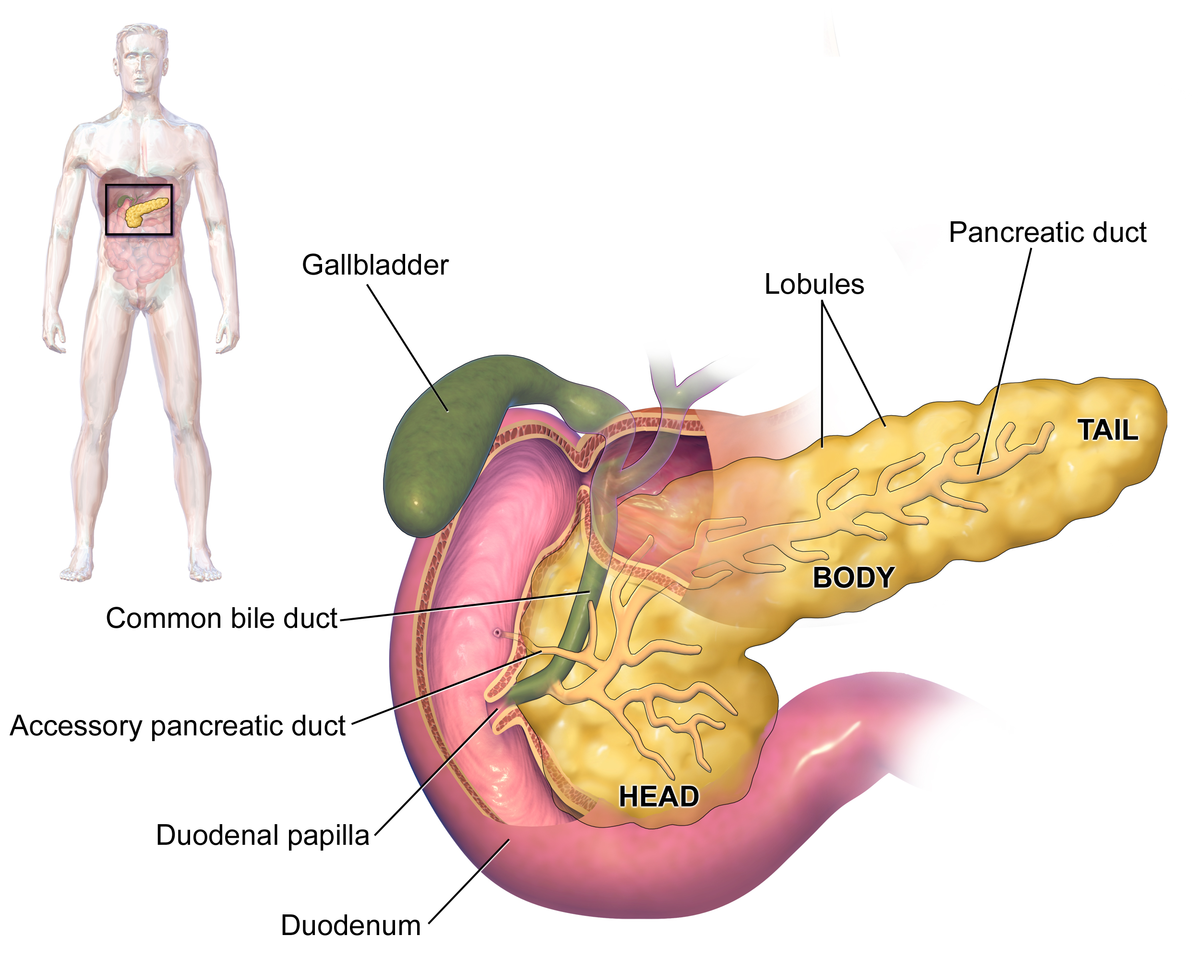Pancreatitis
| Pancreatitis | |
 | |
|---|---|
| Pancreas[1] |
|
Pancreatitis Main Page |
For patient information, click here
Editor-In-Chief: C. Michael Gibson, M.S., M.D. [1], Associate Editor(s)-in-Chief: ; Iqra Qamar M.D.[2]
Overview
Pancreatitis is an inflammatory disease of the pancreas characterized by reversible or irreversible changes in pancreatic structure and function leading to inflammation and fibrosis. The concept of pancreas and pancreatic duct was first described by Johannes Wirsung of Padua in 1642. Pancreatitis may be classified as acute pancreatitis, chronic pancreatitis, autoimmune pancreatitis, and hereditary pancreatitis. Common causes of pancreatitis may include gallstones, hypertriglyceridemia, alcohol, drugs, genetic, autoimmune, iatrogenic, trauma, infection, surgical causes, and obstruction. Acute pancreatitis usually presents with fever, sharp abdominal pain, nausea and vomiting. Patients with chronic pancreatitis present with dull abdominal pain, steatorrhea, pancreatic diabetes, nausea, weight loss, pseudocyst and pancreatic cancer.
Causes
| Type of pancreatitis | Causes |
|---|---|
| Acute pancreatitis |
|
| Chronic pancreatitis |
|
| Autoimmune pancreatitis |
|
| Hereditary pancreatitis |
Classification
Pancreatitis may be classified as:
| Pancreatitis | |||||||||||||||||||||||||||||||||||||||||||||||||||||||||||||||||||||||||||||||||||||||
| Acute pancreatitis | Chronic pancreatitis | Autoimmune pancreatitis | Hereditary pancreatitis | ||||||||||||||||||||||||||||||||||||||||||||||||||||||||||||||||||||||||||||||||||||
Differential Diagnosis
Differentiating pancreatitis from other diseases on the basis of abdominal pain and weight loss:
Pancreatitis presents most commonly with abdominal pain. Pancreatitis must be differentiated from various disease which present with abdominal pain and weight loss such as peptic ulcer disease, pancreatic carcinoma, gastritis, and inflammatory bowel disease.
Abbreviations: RUQ= Right upper quadrant of the abdomen, LUQ= Left upper quadrant, LLQ= Left lower quadrant, RLQ= Right lower quadrant, LFT= Liver function test, SIRS= Systemic inflammatory response syndrome, ERCP= Endoscopic retrograde cholangiopancreatography, IV= Intravenous, N= Normal, AMA= Anti mitochondrial antibodies, LDH= Lactate dehydrogenase, GI= Gastrointestinal, CXR= Chest X ray, IgA= Immunoglobulin A, IgG= Immunoglobulin G, IgM= Immunoglobulin M, CT= Computed tomography, PMN= Polymorphonuclear cells, ESR= Erythrocyte sedimentation rate, CRP= C-reactive protein, TS= Transferrin saturation, SF= Serum Ferritin, SMA= Superior mesenteric artery, SMV= Superior mesenteric vein, ECG= Electrocardiogram
| |||||||||||||||||||||||||||||||||||||||||||||||||||||||||||||||||||||||||||||||||||||||||||||||||||||||||||||||||||||||||||||||||||||||||||||||||||||||||||||||||||||||||||||||||||||||||||||||||||||||||||||||||||||||||||||||||||||||||||||||||||||||||||||||||||||||||||||||||||||||||||||||||||||||||||||||||||||||||||||||||||||||||||||||||||||||||||||||||||||||||||||||||||||||||||||||||||||||||||||||||||||||||||||||||||||||||||||||||||||||||||||||||||||||||||||||||||||||||||||||||||||||